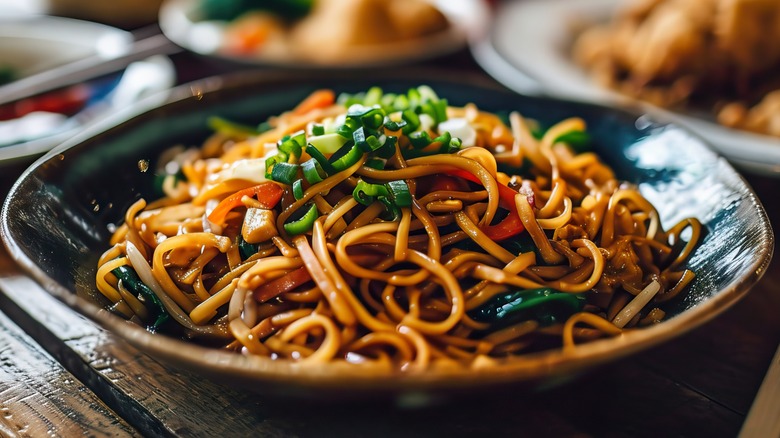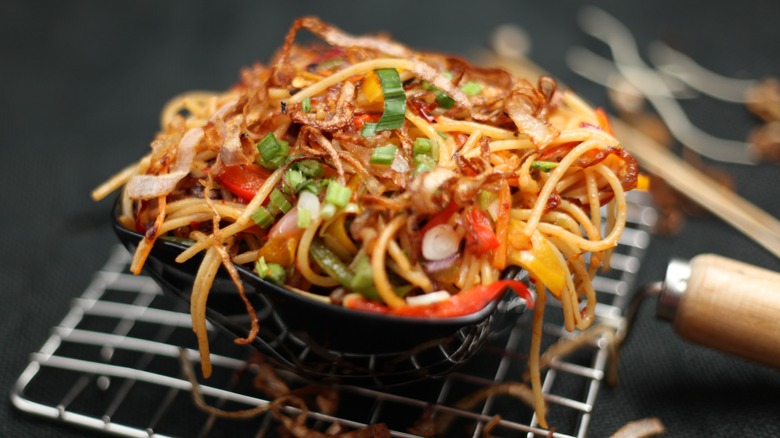The Trick To Making Chow Mein That Tastes Like Chinese Takeout
Chow mein is easily one of the most popular Chinese dishes in the United States. While some less avid fans of Chinese food might still be trying to figure out the difference between chow mein and low mein, lovers of the popular noodle-based dishes are asking an even more pressing question: How do I make chow mein at home? Luckily for you, while you won't be able to capture the aesthetic of dining at a Chinese restaurant at home, chow mein is a very achievable dish that you can make in your kitchen.
As is the case with making any new kinds of cuisine at home for the first time, what comes first is research. Luckily, we here at The Takeout have you covered! We spoke to Kenny Leung, the executive chef at YAO in New York City, all about how to make chow mein just as good as Chinese takeout in the comfort of your home. The Cantonese restaurant's top chef was kind enough to give us plenty of insight into what noodles to use, how to make the sauce, and what instruments you'll need to make your version of the classic Chinese entrée.
Things to remember when making homemade chow mein
When it comes to ingredients, Leung gave us a quick rundown of his preferred method of making chow mein. "The egg noodle is my go-to 'lo mein noodle,'" Leung said, also adding that the sauce is comprised mainly of soy and some handy-dandy oyster sauce. Leung also added that, among the vegetables you add to your chow mein, scallions are a must, calling them a "staple" of good chow mein. Other suitable veggies you can add are carrots, cabbage, garlic, beansprouts, and any other vegetables you would like to add.
Beyond that, cooking your preferred meat (ideally with some of your chow mein sauce) is the last step before the noodle-making process begins — which is perhaps the most crucial aspect of making chow mein. Leung explained the process of cooking your noodles, noting that the most important thing is being an active cook when it comes to constantly stirring and adding ingredients as you go.
"Both a wok and skillet can work here," Leung reassured before adding, "We sear our noodles and it's key to stir them constantly in high heat to be sure they don't get soggy... It's important to mix the noodles constantly and continue stirring while adding starch to the bowl. Keep mixing until the starch and water form a watery, liquid consistency." After your noodles are done, add in your other ingredients — those being the meat, veggies, and chow mein sauce -– to finish making the perfect at-home chow mein.

